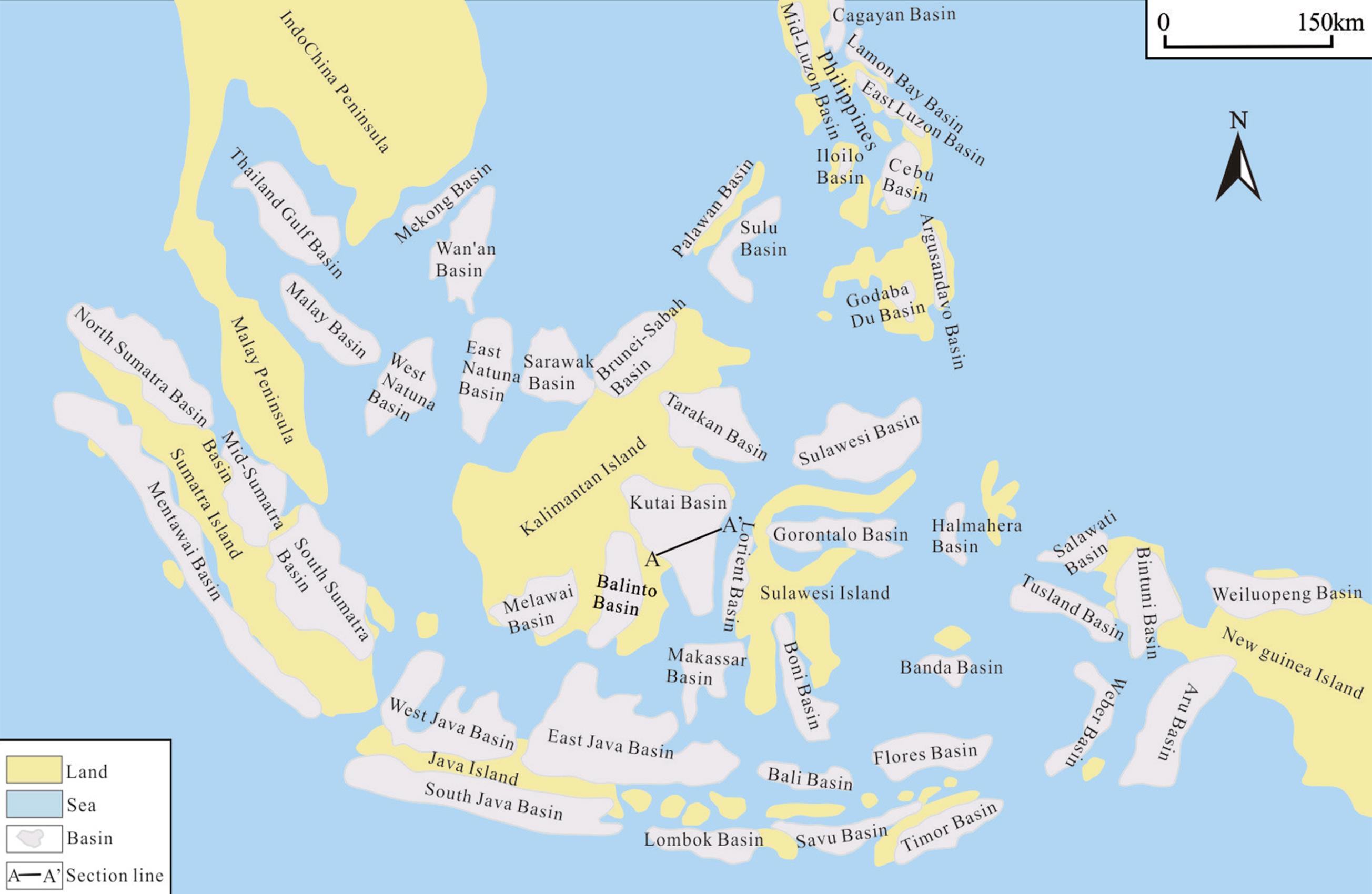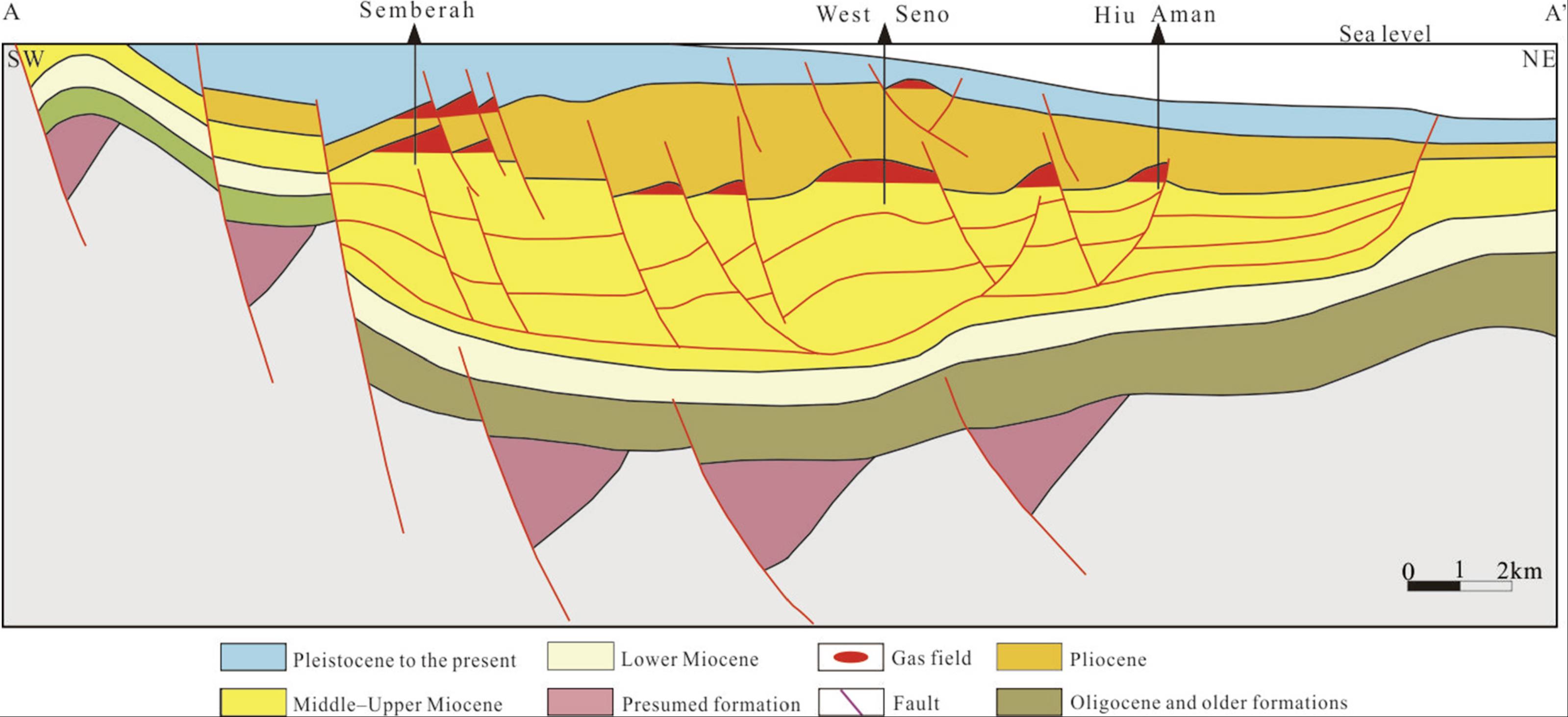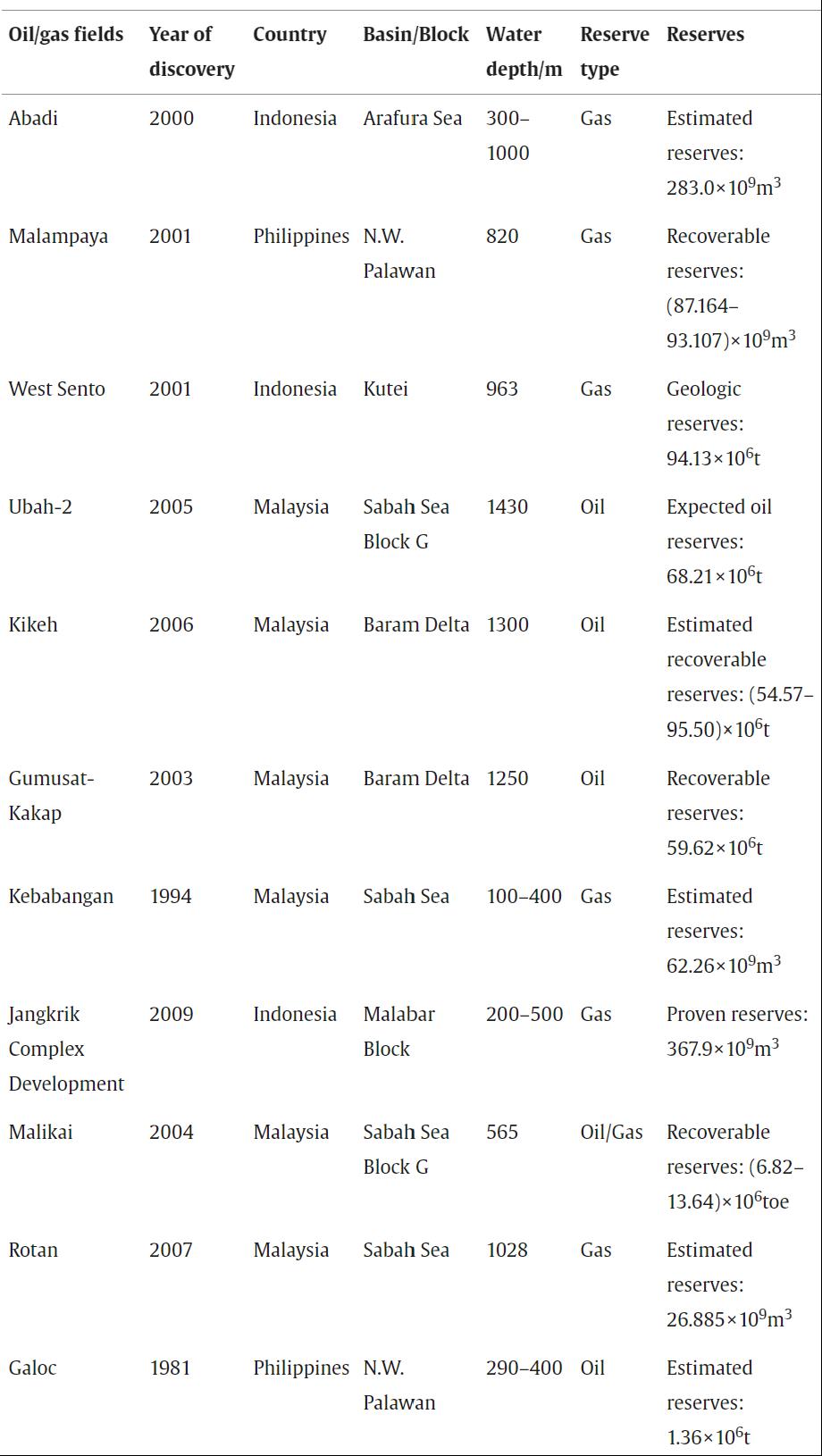
Тип бассейна:
Подтип бассейна:
Класс бассейна:
Возраст бассейна:
Тип полезных ископаемых:
Геологический возраст начало:
Геологический возраст конец:
Площадь: 182860.17 км²
Kutai Basin

Fig. 1. Distribution of major basins in Southeast Asia (according to Refs.).
Currently, the majority of key oil and gas discoveries of deepwater areas in Southeast Asia is distributed in passive continental margin basins around Kalimantan. Among them, the Kutei Basin has experienced 3 tectonic evolution stages: rifting, thermal subsidence and reversal. The basin is characterized by structural features with a fault in the lower part and depression in the upper part (Fig. 2)

Fig. 2. Geological section of the Kutai Basin in Southeast Asia (according to Ref.).
Petroliferous basins in Southeast Asia contain 3 sets of hydrocarbon source rocks in the Eocene, Oligocene and Miocene eras, respectively. The Cenozoic fluvial–delta near-shore marine–continental transitional coal measures and carbonaceous shale can be considered as primary hydrocarbon source rocks, whereas lacustrine and marine shale are secondary ones. Deepwater reservoirs are dominated by Cretaceous and Paleogene–Neogene formations, especially Paleogene–Neogene deep-sea turbidite sandstones. Petroliferous basins in Southeast Asia contain two major play assemblages: Paleogene rifting and Neogene faulting. In the Paleogene play assemblage, hydrocarbon source rocks are dominated by lacustrine mudstone, and reservoirs are dominated by fluvial–delta sandstone, suggesting typical self-generation and self-preservation assemblage. For this assemblage, reservoir distribution is controlled by hydrocarbon-generation sags, where hydrocarbons migrate laterally and vertically, and key trap types include anticlines, faulted anticlines and faulted noses generated due to squeezing in the Late Miocene era. In the Neogene assemblage, hydrocarbon source rocks are predominantly lacustrine mudstone formed during faulting of lower formations; hydrocarbons communicate with upper reservoir formations through faults or surfaces of non-conformity to form hydrocarbon pools; key reservoirs include delta sandstone, carbonate organic reef and deep-sea turbidite sandstone. The Paleogene assemblage is one of the most important ones in Southeast Asia; over 400 reservoirs with a total reserve of 1.195 × 109 toe have been found. The Neogene assemblage is the most critical assemblage in Southeast Asia; more than 1500 reservoirs with a total reserve of 12.024 × 109 toe have been found. Accordingly, the Neogene assemblage is a key target of exploration in Southeast Asia.
Oil/gas exploration operations in Southeast Asia involve Indonesia, Malaysia, Brunei, Thailand, Vietnam and Philippines. Previous exploration operations were distributed predominantly in on-shore and shallow-water areas. Since the 21st century, exploration operations have progressed rapidly to deepwater areas. A large number of deepwater oil fields have been found in Brunei–Sabah, Palawan, Sarawak, Kutei and other basins or deepwater areas (Table 1). Discovery of these oil fields highlights the great potentials of deepwater areas in Southeast Asia. Estimates show that deepwater areas of Southeast Asia contain rich hydrocarbon resources, accounting for approximately 17% of the world's total. However, exploration operations in deepwater areas are still in their preliminary stages. In the future, deepwater areas in Southeast Asian countries can be seen as the key contributors for enhancement of both reserves and production.
Table 1. Major deepwater oil and gas fields in Southeast Asia.

Data source: Giant discoveries of oil and gas fields in global deepwaters in the past 40 years and the prospect of exploration. Gongcheng Zhang, Hongjun Qu, Guojun Chen, Chong Zhao, Fenglian Zhang, Haizhang Yang, Zhao Zhao, Ming Ma. 2019
Следующий Бассейн: Krishna - Godavari